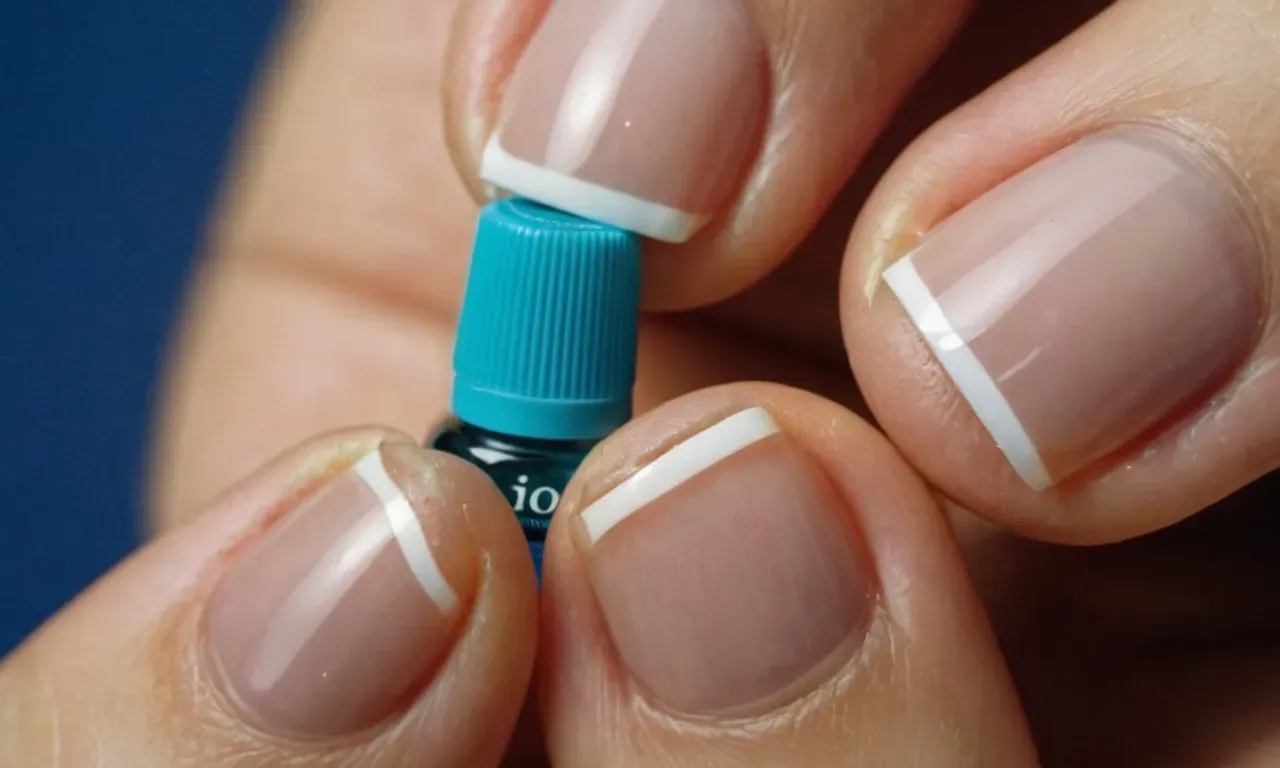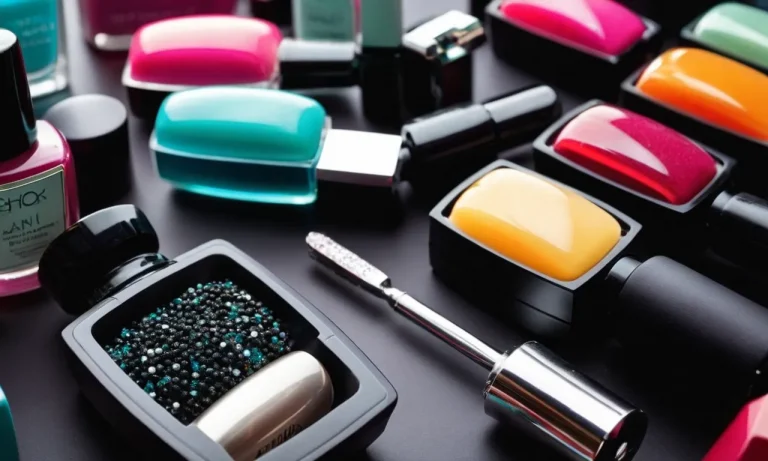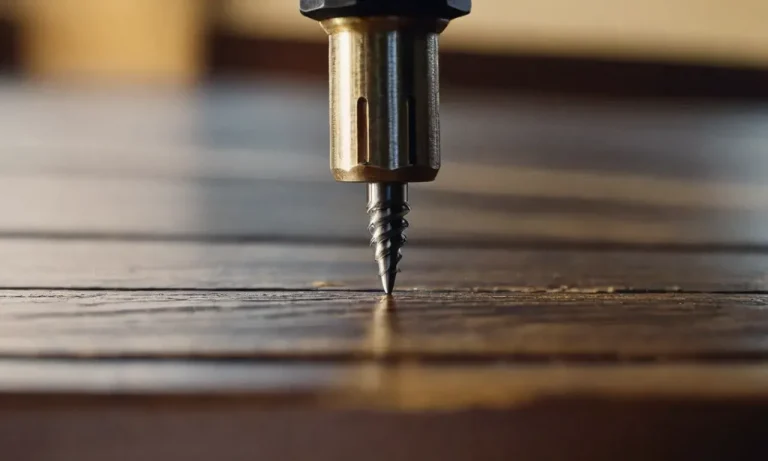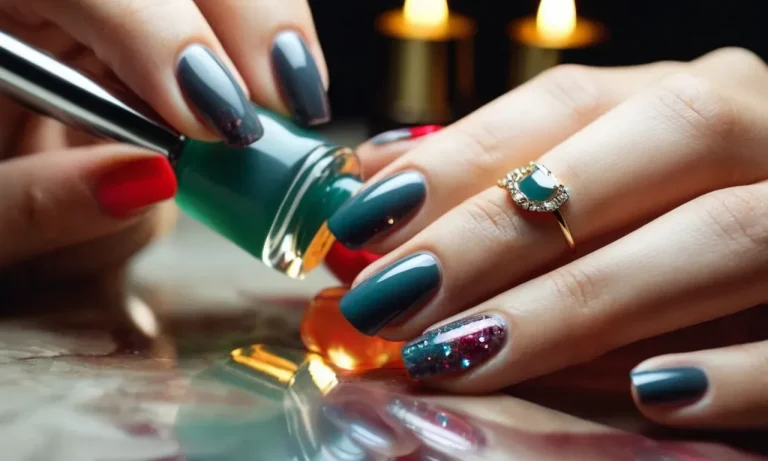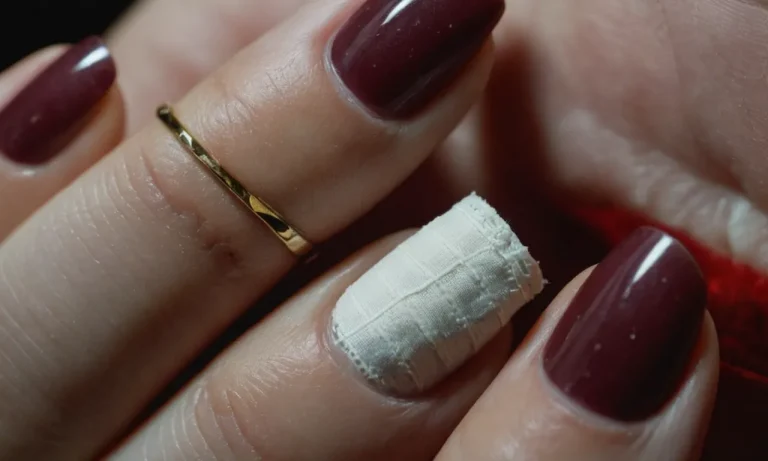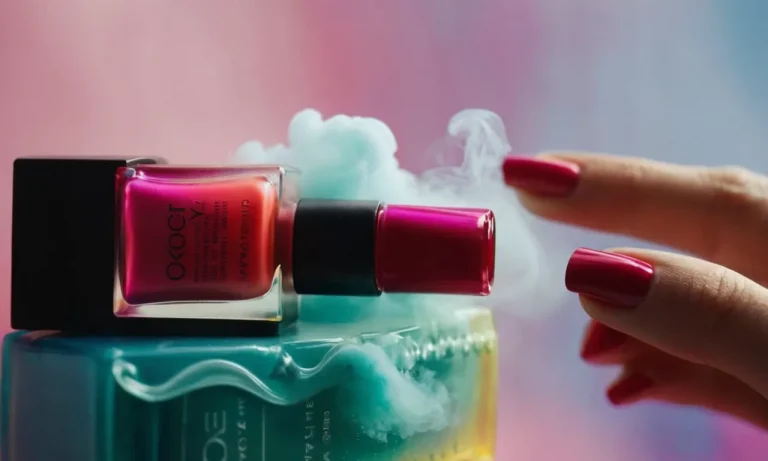How Long Does It Take For Vicks Vaporub To Work On Nail Fungus?
Nail fungus is an unsightly and often uncomfortable fungal infection that causes thickened, discolored nails. If you have nail fungus, you may be wondering if home remedies like Vicks VapoRub can help get rid of it.
This article will explore how long it takes for Vicks VapoRub to work on nail fungus, providing a detailed look at using this home remedy to treat fungal nail infections.
If you’re short on time, here’s a quick answer to your question: It can take 2 to 6 months of consistent, daily application for Vicks VapoRub to fully clear up a fungal nail infection. However, you may see some improvement within just a few weeks.
What Causes Nail Fungus and Why is it Hard to Treat?
Overview of the nail fungus condition
Nail fungus, also known as onychomycosis, is a common fungal infection that affects the nails on your fingers and toes. It’s caused by various types of fungi that thrive in warm, moist environments (1).
An estimated 10% of adults in the US have nail fungus, making it one of the most widespread nail conditions (2).
Fungal nail infections usually begin as a white or yellow spot underneath the tip of your nail. As the infection progresses, the nail can become thickened, discolored, and brittle. In severe cases, the nail may separate from the nail bed and fall off.
Nail fungus not only causes cosmetic concerns, but it can also lead to pain, discomfort, and secondary bacterial infections.
Main causes of nail fungus infections
There are three main ways to develop a fungal nail infection:
- Dermatophytes – Fungi that infect the nail, nail bed, and surrounding skin. Dermatophytes account for 90% of toenail fungal infections and 50% of fingernail infections (3).
- Yeasts – Candida albicans is the most common yeast species that can infect nails. Yeast infections are more likely to affect fingernails.
- Non-dermatophytic molds – Various species of fungi that are commonly found in soil and on plants. These molds make up about 10-20% of nail fungal infections (4).
There are several factors that put you at an increased risk of developing nail fungus (5):
- Having a weakened immune system or taking immunosuppressants
- Being over age 60 years old
- Having a prior nail injury, trauma, or nail infection
- Having a damp occupation like dishwashing or swimming
- Sharing showers or having a communal shower at the gym
- Having diabetes, peripheral vascular disease, or low blood circulation
- Having hyperhidrosis (excessive sweating) of hands or feet
Factors that make nail fungus difficult to cure
Although fungal nail infections are common, they can be challenging to treat. Here’s why it’s hard to get rid of nail fungus:
- Nails grow very slowly – It takes 6-12 months for fingernails and 12-18 months for toenails to fully grow out. Therefore, it takes time for an infected nail to grow out and be replaced by a new, healthy nail.
- Fungi can survive underneath nail – Oral antifungal medications and topical treatments have difficulty penetrating through the hard nail plate to reach fungi residing deep within the nail bed.
- High recurrence rate – Even after seemingly successful treatment, nail fungus often comes back. Up to 50% of cases recur within 1 year of finishing treatment (6).
- Oral antifungal side effects – Medications like terbinafine and itraconazole can cause gastrointestinal issues, liver damage, and interact with other drugs.
How Vicks VapoRub Can Help Treat Nail Fungus
Active ingredients in Vicks that fight fungus
Vicks VapoRub contains active ingredients like eucalyptus oil, menthol, and camphor that may help treat fungal nail infections. These ingredients are thought to have antifungal and antimicrobial properties that inhibit the growth of fungus when applied topically.
According to the Mayo Clinic, limited evidence suggests Vicks may be an effective home remedy for mild to moderate toenail fungus.
How to properly apply Vicks to nails
To use Vicks for nail fungus, first clean and trim the infected nail. Apply a layer of Vicks VapoRub to the discolored area of the toenail. Put on socks after application to keep the Vicks in place and boost its absorption. Repeat this process once or twice a day for up to 48 weeks.
Be patient, as it may take at least 6 months before you observe visible results. Proper and consistent application is key for Vicks to effectively penetrate the nail bed and eradicate the fungal infection from within.
Tips for using Vicks for best results
- Soak the infected foot in warm water to soften the nail before each Vicks application.
- Apply Vicks gently under the tip of the nail with a cotton swab.
- Use a nail file to thin out nail flaking and allow better Vicks absorption.
- Be patient and apply Vicks diligently every day for 6 to 9 months to see results.
- Combine with oral antifungal medication for severe or persistent nail fungus cases.
On average, it takes 3 to 6 months of consistent Vicks VapoRub usage to show progress in clearing nail fungus. However, it can take up to 1 year to fully cure an existing fungal nail infection. Using Vicks to treat mild cases has a higher success rate.
For optimal results, make sure to follow product usage guidelines and use it along with proper nail fungus care and hygiene practices.
What to Expect When Using Vicks for Nail Fungus
Seeing early improvement within a few weeks
When using Vicks VapoRub to treat nail fungus, many people report seeing early signs of improvement within the first few weeks of daily application (1). The powerful menthol and eucalyptus oil ingredients in Vicks can help penetrate the nail and start attacking the fungal infection right away.
Some early improvements you may notice include:
- Nail beginning to clear up from the cuticle area outwards
- Reduction in yellowing, thickening or crumbling of infected part of nail
- Less debris visible under the nail
- Reduced pain, inflammation or throbbing in the nail and toe
These early positive effects can boost confidence that the Vicks treatment is working to fight off the fungal infection. Just a few weeks of progress can motivate people to stick with this inexpensive home treatment.
Full nail fungus clearance in 2 to 6 months
With consistent Vicks VapoRub application, most cases of nail fungus improve gradually over 2-6 months (2). The menthol and camphor in the Vicks penetrate deeper over time to eradicate fungal spores living under and inside the nail. Here is what you can expect during the months of treatment:
| Month 1 | Early clearing of debris and discoloration near cuticle |
| Months 2-3 | Infection continues retreating towards nail tip |
| Months 4-5 | Most or all discolored/damaged nail grows out |
| Month 6 | New pink, healthy nail visible growing from cuticle |
So within about 6 months, the antifungal properties of Vicks VapoRub often completely cure nail fungus. The unhealthy part of the nail grows out to reveal fresh nail underneath. Some people may find their particular fungal infection takes a little less or more time to fully resolve.
Either way, Vicks offers an inexpensive home treatment option.
What to do if Vicks is not working for you
While Vicks VapoRub eliminates toenail fungus in many people, it does not work for every case. If you treat nail fungus with Vicks daily for 3-6 months and see little improvement, it may be time to try an alternate treatment. Some things you can do include:
- Switch to an over-the-counter liquid antifungal like Clotrimazole or Terbinafine (3)
- Get a prescription oral or topical antifungal medication from your doctor
- Undergo laser therapy or nail removal procedures if the infection persists (4)
Vicks is an affordable and low-risk home treatment worth trying first. But working with a doctor to get professional medications or procedures may be necessary if that fails. Getting evaluated can also rule out nail problems potentially caused by something else, like psoriasis or a nail injury.
Other Home Remedies and Treatments for Nail Fungus
Tea tree oil
Tea tree oil is a popular natural antifungal treatment. It contains terpinen-4-ol, which appears to attack fungal cells (1). In one study, daily application of 25-50% tea tree oil enabled clinical improvement in 60% of patients with toenail fungus after 3 months of treatment (2).
You can apply undiluted tea tree oil to the affected nails once or twice daily using a dropper or cotton swab. Be sure to clean and dry your nails thoroughly before applying.
Oregano oil
Oregano oil also has antifungal properties, likely due to its content of carvacrol and thymol (3). In one test-tube study, oregano oil was effective against 24 strains of fungi, making it a promising natural remedy (4). You can apply a few drops of oregano oil to affected nails twice daily.
Combine it with a carrier oil like olive or coconut oil if you have sensitive skin.
Apple cider vinegar
The acetic acid in apple cider vinegar may help kill fungus (5). What’s more, its antibacterial properties could help prevent secondary infections (6). That said, current evidence is limited to test-tube studies. More human research is needed.
To use apple cider vinegar topically, combine equal parts with water. Apply the mixture to affected nails with a cotton ball once or twice daily.
Baking soda
A small study found that a paste made of baking soda and water inhibited the growth of fungus when applied to affected toe and finger nails (7). You can create a paste by mixing equal parts baking soda and water. Apply it to nails using a cotton swab and let it sit for 10 minutes before rinsing.
Repeat once or twice daily until the infection clears.
Prescription medications
For moderate to severe cases, doctors may prescribe antifungal pills, such as terbinafine or itraconazole. These oral medications can produce a cure rate of 70–80% when taken continuously for 12 weeks (8). Common side effects include headache, upset stomach, rash, or liver problems.
Some drugs interact with these antifungals, so be sure to tell your doctor what medications you take before starting treatment.
Laser treatment is another option that involves shining a beam of light on the fungus under local anesthesia. Several sessions may be required, but it has a high success rate, especially for mild infections (9). However, it can be expensive. Discuss pros, cons, risks and costs with your podiatrist.
If over-the-counter remedies don’t seem to be helping, see your doctor. Prescription antifungal pills or laser therapy may be necessary to get rid of a persistent fungal nail infection.
When to See a Doctor About Nail Fungus
If fungus persists after 6 months of treatment
Nail fungus, also known as onychomycosis, can be stubborn and difficult to treat. Many over-the-counter antifungal treatments require 6 months or more of consistent application before results are seen.
If after diligently using an antifungal for over 6 months you don’t see improvement, it’s time to make an appointment with your doctor.
Prescription oral antifungal medications or laser treatments may be more effective for severe or persistent fungal nail infections. Oral antifungal pills like terbinafine or itraconazole can penetrate deeper to attack root causes and may be able to knock out infections more quickly than topicals.
Laser treatments like the PinPointe FootLaser use a high-energy beam to blast fungi and spur nail regeneration. These medical treatments can come with risks like liver damage or are expensive, so it’s important to consult a physician.
If infection worsens or spreads
Nail fungus that starts in one nail can sometimes spread to other nails. This is more likely if the infection issevere or left untreated altogether. Pay attention to any changes during self-treatment. If you notice more nails becoming infected, the fungus worsening, or nail deterioration, it’s smart to see your doctor.
A podiatrist can determine if your at-home antifungal routine needs to be changed or if you need prescription meds. Stopping the spread of a fungal outbreak early is important. The more nails affected, the harder it is to treat.
If nail fungus is causing you pain or discomfort
While a fungal nail infection itself is rarely painful, it can lead to other issues that cause discomfort. As the infection progresses, nails can become brittle and crumbly. Painful ingrown nails are also common with fungal infections.
If your nail fungus is making your daily life uncomfortable, don’t hesitate to see a podiatrist. They can remove ingrown or damaged sections of nail and help find better treatment options to clear your infection. Getting advanced nail fungus under control can alleviate associated pains.
If you have diabetes, vascular disease or a weakened immune system
Those with diabetes, vascular disease, or compromised immune systems face increased risks with fungal nail infections. Diabetes in particular diminishes blood flow to extremities and high blood sugar impairs your body’s ability to heal itself.
If not treated promptly and properly, nail fungus can lead to cellulitis, a serious bacterial skin infection. People with chronic illnesses should see a doctor at the first signs of nail fungus rather than attempting to self-treat.
Prescription oral or intravenous antifungals may be warranted in these cases. Left untreated, the consequences can be severe.
Conclusion
In conclusion, using Vicks VapoRub to treat nail fungus requires diligent, daily application for typically 2 to 6 months before you’ll see full clearance. Some minor improvements may show within just a few weeks. Be sure to apply Vicks properly and consistently to increase its effectiveness.
Consider combining it with other remedies. See your doctor if the infection lasts more than 6 months or gets worse. With patience and persistence, Vicks VapoRub can help get rid of ugly, uncomfortable fungal nail infections.

